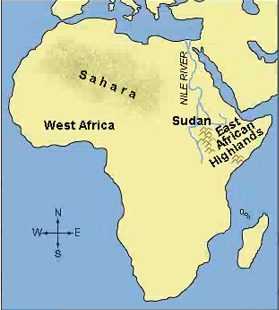题目解析:
【题目翻译】选择两个答案选项,根据第5段,选择表明撒哈拉以南地区刀耕火种农业的正确陈述。
A:这需要仔细选择耕作土壤。
B:这包括定期灌溉土壤以提高肥力。
C:经过两个世纪的大力实施,它被废弃了。
D:一旦控制了,它就迅速蔓延开来。
【判定题型】:题目问的是文章中的具体细节信息,故根据题目问法可以判断本题为事实信息题。
【关键词定位】:根据关键词“sub-Saharan slash-and-burn agriculture”,定位到Passage 5 的第一句和最后一句,第一句原句为The process of clearance and burning may have seemed haphazard to the uninformed eye, but it was not. 意思是清理和燃烧的过程对于不知情的人来说似乎是偶然的,但事实并非如此。
最后一句:“slash-and-burn agriculture expanded its frontiers rapidly as village after village took up new lands, moving forward so rapidly that one expert has estimated it took a mere two centuries to cover 2,000 kilometers from eastern to southern Africa”,意思是“随着一个又一个村庄占领新土地,刀耕火种的农业迅速扩展了边界,发展如此迅速,以至于一位专家估计,从东部到南部非洲,仅仅用了两个世纪就覆盖了2000公里。”。
【逻辑分析】文章第五段第一句说明了刀耕火种的要素:土壤很重要。最后一句说明了覆盖的速度之快。
【选项分析】
A选项: 它包括小心地选择耕种地。根据关键词“careful selection of soils”定位到第五段的这句话“The art of farming was careful soil selection, that is, knowing which soils were light and easily cultivable, could be readily turned with small hoes.”这句话说,农业的艺术就在于小心地选择土地,那就是说,知道哪些土壤是轻土壤,容易耕种,很容易用小锄头翻种。所以A选项符合原文,正确。
B选项:它包括河水经常淹没土壤,增强土壤的肥力。错误,文中是这么说的“Except in favored areas, such as regularly inundated floodplains: tropical Africa's soils were of only moderate to low fertility.”意思是除了经常被水淹没的河漫滩地区,非洲土壤的肥力一般都在中等或以下。所以B选项与“刀耕火种”无关,故排除。
C选项:在实行了2个世纪后,它被取缔了。根据关键词“two centuries”定位到文章最后一句“……one expert has estimated it took a mere two centuries to cover 2,000 kilometers from eastern to southern Africa.”这句话的意思是,一个专家估计它仅仅只用了两个世纪的时间,就覆盖了东非和南非2000平方公里的土地。但是文中并没有说它被取消了,所以C选项与原文矛盾,故排除。
D选项:在被采用之后,“刀耕种”法传播得很快。正确,对应第五段最后一句。故D选项正确。


 At the end of the Pleistocene (around 10,000 B.C.), the technologies of food production may have already been employed on the fringes of the rain forests of western and central Africa, where the common use of such root plants as the African yam led people to recognize the advantages of growing their own food. The yam can easily be resprouted if the top is replanted. This primitive form of "vegeculture" (cultivation of root and tree crops) may have been the economic tradition onto which the cultivation of summer rainfall cereal crops was grafted as it came into use south of the grassland areas on the Sahara's southern borders.
At the end of the Pleistocene (around 10,000 B.C.), the technologies of food production may have already been employed on the fringes of the rain forests of western and central Africa, where the common use of such root plants as the African yam led people to recognize the advantages of growing their own food. The yam can easily be resprouted if the top is replanted. This primitive form of "vegeculture" (cultivation of root and tree crops) may have been the economic tradition onto which the cultivation of summer rainfall cereal crops was grafted as it came into use south of the grassland areas on the Sahara's southern borders.